
* The US has acquired a number of other smart munitions, including the CBU-97 Sensor-Fuzed weapon anti-armor cluster bomb; the Advanced Precision-Kill Weapon System a laser-guided version of the popular Hydra-70 70-millimeter rocket; and smart artillery shells, most notably the M982 Excalibur GPS-guided 155-millimeter shell. There has also been work on small smart munitions, much of which has gone nowhere, but which did result in the AGM-176 Griffin small missile.
* The US has also developed other smart munitions, such as cluster bombs, laser-guided 70-millimeter rockets, and artillery shells.
The USAF fielded a series of cluster-munition dispensers under the family name of "Tactical Munitions Dispenser (TMD)". All were similar in appearance, being 2.34 meters (7 feet 2 inches) long and 41 centimeters (16 inches) in diameter, with three panels that are popped off to disperse the submunitions; The detail differences between them are to accommodate different sorts of submunition loads. The CBU-87/B, for example, was loaded with 202 BLU-97/B Combined Effects Munitions.
The first of the "smart" TMDs, the "CBU-97/B", wasn't really a guided weapon itself, but carried ten "BLU-108/B Sensor-Fuzed Weapon (SFW)" submunitions, each in turn with four "Skeet" anti-armor submunitions featuring infra-red seekers.
The SFW was an outgrowth of work on smart weapons by Textron Defense Systems, beginning in the mid-1980s under the ASSAULT BREAKER effort. Development of such systems was accelerated by the defense cutbacks in the 1990s that required the military to obtain "force multipliers" to make best use of restricted resources. Trials of the SFW began in the early 1990s and demonstrated the lethality of the weapon. In a test conducted in late 1991, for example, an F-16 dropped four canisters from low altitude, which then dispersed a total of 40 BLU-108/B submunitions over a column of 24 vehicles. 17 hits were scored on 11 of the vehicles.
The CBU-97/B was based on the standard TMD canister, and had a loaded weight of 450 kilograms (1,000 pounds). The CBU-97/B could attack armored vehicles over a wide footprint. The munition could be delivered at altitudes from 60 meters to 6 kilometers (200 to 20,000 feet). An F-16 could carry 4 CBU-97/Bs; an F-15E could carry 10.
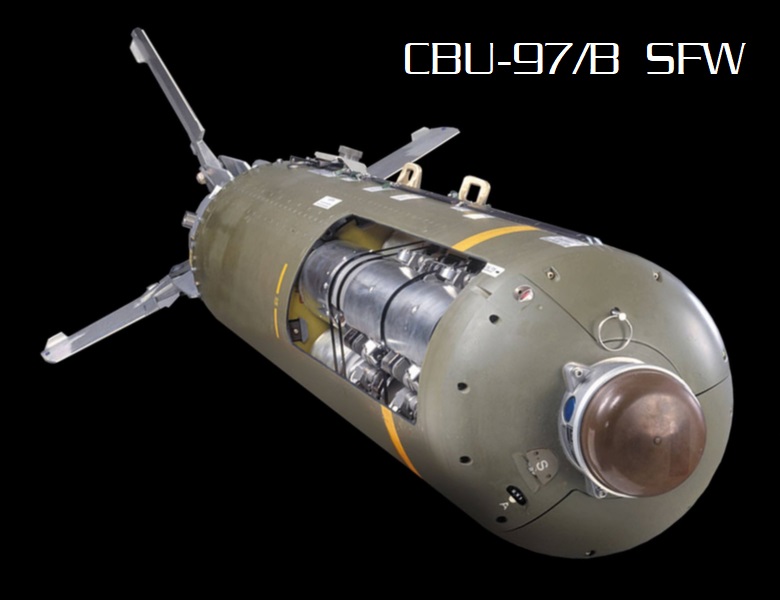
Once a CBU-97/B dispenser was released, a pyrotechnic charge popped open the TMD's three panels to release the ten BLU-108/B submunitions. Each submunition was a cylinder that was decelerated by a small parachute; the parachute also oriented the submunition vertically over the target area. Chute deployment timing was staggered to allow the submunitions to disperse, and the actual area covered was a function of aircraft speed and the timing interval selected.
As the cylinder descended, the four Skeet warheads flipped out from the body of the submunition. Each Skeet consisted of a 13.3-centimeter (5.25-inch) diameter disk of flat copper backed by an explosive charge that was boresighted to a protruding infrared sensor. Once the cylinder was aligned properly over the target area, the parachute was cut loose as a rocket motor fired through two nozzles, which were canted so that they stopped the cylinder's fall and set it spinning. When the cylinder's spin got up to speed, the Skeets were released in pairs to fly away from the cylinder; they wobbled in flight to allow the infrared sensor to scan over the ground below in a spiral pattern.
When a Skeet flew over a vehicle, the warhead's infrared sensor identified it as a target, and fired the explosive charge. That slammed the wadded-up copper plate into the target at about 1,500 KPH (930 MPH), punching through armor and sending splinters through the interior. Explosive reactive armor was ineffective against such a "kinetic kill" projectile. The Skeets were not guided; they were dispersed more or less at random over a target area, and only fired if they flew over a target. If the Skeets didn't find a target after a certain length of flight, they exploded into fragments as a harassment measure and to prevent "pollution" of the landscape by hazardous duds.
The infrared sensor was capable of working through fog, since it was close to the target; it worked at night and through electronic countermeasures. Not all the warheads were expected to find targets, but the dispersal pattern of the 40 Skeets carried by an SFW was judged likely to be effective against concentrated targets such as an armor column.
Although SFW development proved more troublesome than expected, the SFW did enter service, proving highly effective. It was introduced to combat during air strikes during the Kosovo campaign in 1999, with SFW-loaded CBUs acquiring the nickname of "cans of whup-ass". Improvements were added during its production, including an updated seeker to permit attacks on naval vessels and even parked, cool aircraft and ground vehicles. The explosively-formed projectile scheme was enhanced, to include a ring of 16 explosively-formed penetrators around the central main penetrator, providing an additional shotgun effect. In addition, a more insensitive explosive was used to meet Navy requirements for shipboard storage and handling. SFW is no longer in production, but appears to still be in inventory.
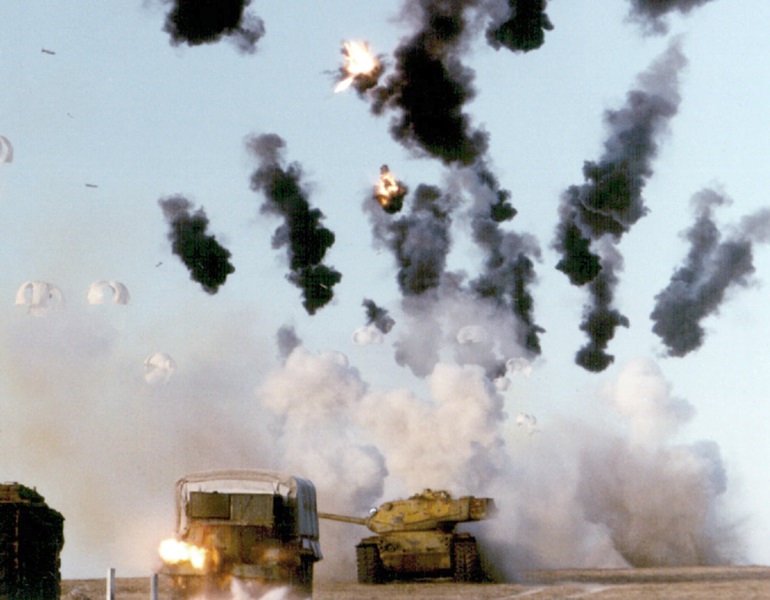
* The USAF then developed a guided tailkit for the TMD family. The "Wind Corrected Munitions Dispenser (WCMD)" or "Wick-Mid", provided INS guidance through the addition of a new tailkit assembly. Unguided cluster bomb units had to be released from low altitude to keep them from being blown off target by the wind; adding a guidance system permitted such munitions to be dropped from high altitude. The original program definition only envisioned an INS tailkit that could provide a CEP of 26 meters (85 feet), which was regarded as acceptable for a wide-area weapon such as a cluster bomb unit, but the tailkit was designed to accommodate a GPS guidance system should such an upgrade seem necessary. WCMD configurations included:
A WCMD with BLU-114/B submunitions -- which threw out carbon-filament threads to short out power stations as a "soft kill" -- was also introduced, and the Air Force Research Laboratory developed an "agent defeat" weapon based on the WCMD named "Stop" to allow it to attack chemical or biological weapon storage facilities using 3,800 titanium flechettes to puncture storage tanks and production facilities. Two of these weapons, designated "CBU-107/B", were expended in the invasion of Iraq in the spring of 2003 under the name of "Passive Area Weapon (PAW)".
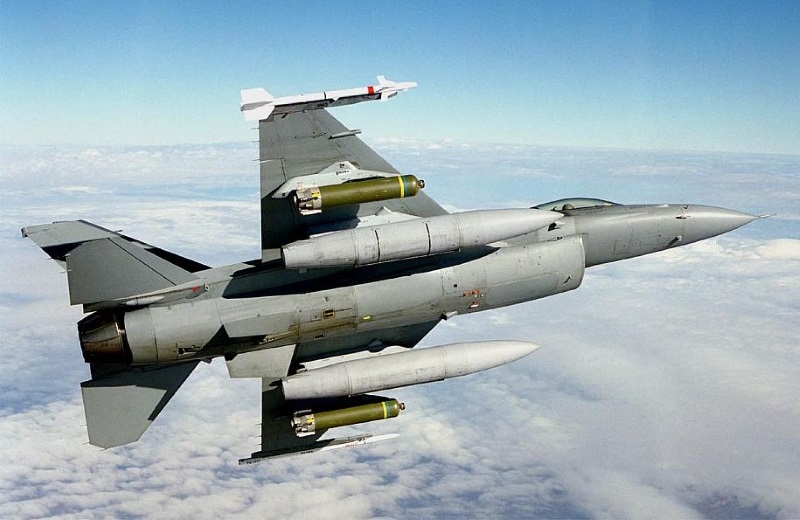
WCMDs have been used in combat, with CBU-103/B munitions used in the Afghanistan campaign in the winter of 2001:2002. The United Arab Emirates purchased a number of the munitions. The Air Force experimented with the "WCMD-ER", which had popout gliding wings to give it a typical range of about 55 kilometers (30 nautical miles) and was fitted with a GPS-guidance upgrade. However, it was canceled in 2006 due to technical difficulties and budget cuts. Since the US has been moving away from cluster munitions, it is not clear what the operational status of the WCMD munitions is.
* As discussed earlier, following World War II, along with the "slick" bomb family, the US military also acquired unguided rockets in their arsenal -- most prominently the 70-millimeter Hydra-70 unguided rocket. As it emerged in its modern form, the Hydra-70 was generally fired from 7-tube and 19-tube launchers. Its Mark 66 rocket motor was 106 centimeters (3 feet 6 inches) long and weighed 6.16 kilograms (13.6 pounds), when not fitted with a warhead. It burned for about 400 meters (1,300 feet) before burnout, giving the rocket a range of over 10 kilometers (6.2 miles) when launched at altitude. The range of the earlier Mark 40 rocket motor was only 8 kilometers (5 miles).
The Mark 66 had four nozzles that were slightly canted to set the rocket spinning at a rate of about 10 revolutions per second, improving the weapon's stability and accuracy. The Mark 66 had a wraparound, spring-loaded tailfin assembly. Warheads were screwed into the front of the motor; the rocket could be fitted with general-purpose blast-fragmentation, submunition, flechette, smoke, and illumination warheads.
Given the modular nature of the Hydra-70 and the emergence of laser-guidance systems, it was a natural progression to develop a laser-guidance kit for the Hydra-70 -- though oddly, it didn't happen until the 21st century, presumably because it was regarded as too small to be worth it. The Army and General Dynamics worked on a laser-guided Hydra-70 system, designated the "Advanced Precision Kill Weapon System (APKWS)", nicknamed "Hellfire JR" after the Hellfire laser-guided anti-tank missile. The program suffered from "requirements creep", and was canceled after suffering from poor test results.
The Army scaled back requirements and ran a second competition for the APKWS, with BAE Systems winning the contract. Initial all-up tests were in 2007. The APKWS amounts to a module, the "WGBU-59/B", screwed between the warhead and rocket motor of a standard Hydra-70 rocket, with the module featuring four pop-out fins. The baseline rocket configuration used the standard M151 HE warhead for the Hydra-70, and sometimes the M152 armor-piercing warhead.
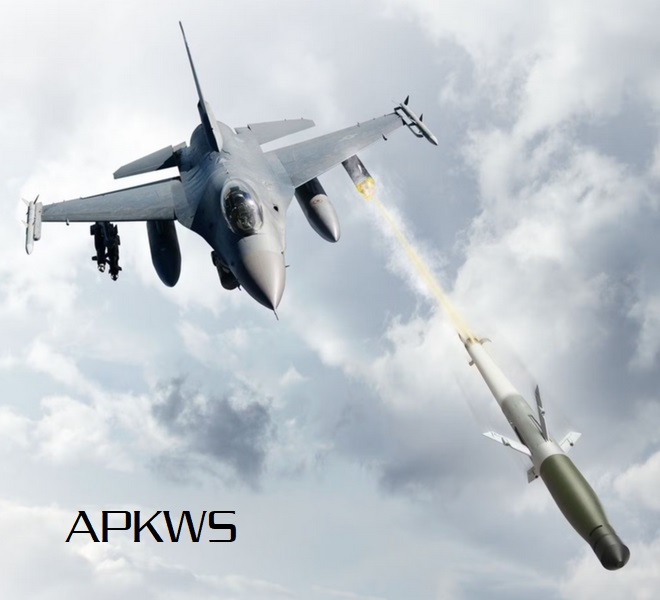
The AKPWS module used a "distributed aperture SAL seeker (DASALS)". A sensor, or "eyeball", for the DASALS was mounted on each of the four pop-out fins, instead of the nose -- a nose-mounted sensor wouldn't be practical, given the installation. There were little control surfaces on the ends of each of the four pop-out wings. Before launch, the wings were sealed inside the seeker module, only popping out after a half-second following launch; that helped prevent damage to the seeker from the launch of another rocket in the launch pod. The seeker, which had a 40-degree field of view, then acquired the target, remaining on lock by balancing the inputs from the four "eyeballs". BAE Systems later developed an improved guidance system that stretched range by about 30%.
BAE Systems claimed the APKWS cost about 15% as much as a Hellfire, though the low cost was partly due to the large existing stockpile of Hydra-70 rockets -- all of which were easily converted to a guided configuration with the APKWS. It does require an updated "Digital Rocket Launcher (DRL)" that included the appropriate interface connections for the "smart" weapons.
The US military became very enthusiastic about APKWS, the effort becoming a multiservice program, with the US Navy taking charge to get the weapon into service -- likely because the Army was so heavily committed in Iraq at the time. The APKWS entered low-rate production in 2011, and was fielded in 2012, with initial deployment on US Marine Cobra helicopters in Afghanistan, the weapon also going into Navy inventory. It has proved very reliable and highly lethal.
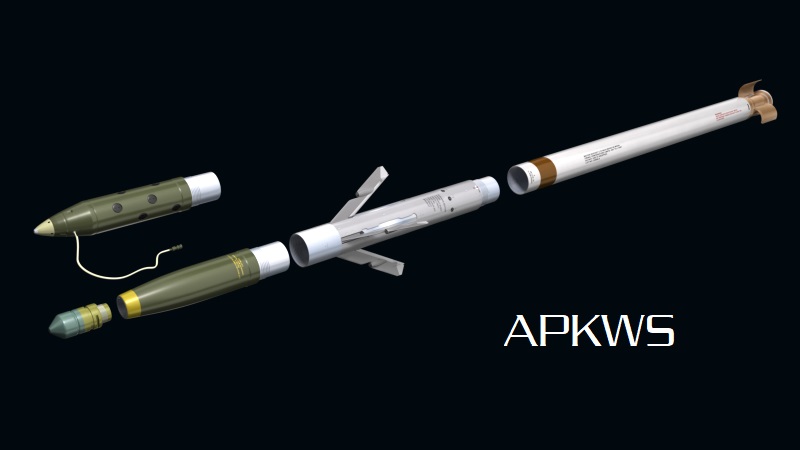
The low cost and small blast radius of the APKWS has made it a particularly handy weapon for the sort of dirty little wars currently in fashion. It could be carried by any platform that could carry the Hydra-70, with little crew training; laser designation could be provided by ground forces or other platforms if the launch platform didn't have the capability. Its light weight also made it an excellent weapon for small drones.
While APKWS was originally seen as an air-to-ground munition, it was soon realized it was also a good surface-to-air munition, or even a surface-to-air munition. L3Harris accordingly developed a "Vehicle-Agnostic Modular Palletized ISR Rocket Equipment (VAMPIRE) system, which featured a pivoting four-round launcher, along with an EO-IR / laser rangefinder & designator turret on a mast. It could be mounted on the bed of a pickup truck or other tactical vehicle. Along with a proximity fuze designed for APKWS, the rocket became an excellent anti-drone munition.
General Dynamics has developed a combined-effects "high-explosive anti-tank / anti-personnel / anti-materiel (HEAT-APAM)" warhead for APKWS to make it more effective, with the HEAT-APAM warhead having a penetrating nose cap, an anti-armor hollow charge, and a fragmenting casing.
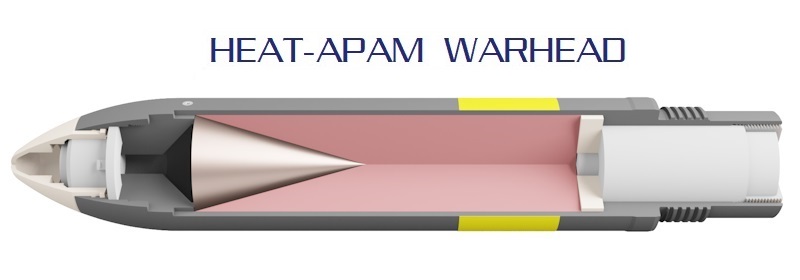
* APKWS has been adopted by all the US combat services, and has been adopted by a number of countries, including Britain, Jordan, Iraq, and Mexico. It was supplied to Ukraine from 2023 to help repel the Russian invasion, with videos appearing of the APKWS being launched from Ukrainian Humvee tactical vehicles. Ukraine was also to receive the VAMPIRE system.
Lockheed Martin lost out on the competition for APKWS II, but went ahead on development of their "Direct Attack Guided Rocket (DAGR)" weapon anyway. Unlike APKWS, DAGR featured a nose-mounted SAL seeker, derived from the Hellfire anti-armor missile. Lockheed Martin also developed a 5-kilogram (11-pound) with a SAL seeker named the "Shadow Hawk" -- with a diameter of 70 millimeters, meaning it was likely a modified DAGR seeker / warhead. Neither of them went anywhere. Several other guided weapons based on the 70-millimeter rocket have been developed, but none of them have gone anywhere either.
* Although the US Air Force focused on the 70-millimeter rocket, the US Navy and Marines were inclined toward the more potent 127-millimeter (5-inch) "Zuni" rocket, which saw extensive use in Vietnam and later wars. It featured a solid-rocket motor 1.95 meters (6 feet 5 inches) long, with four pop-out tailfins. Like the Hydra-70, it has modular warheads, including high-explosive, anti-armor, flare, smoke, chaff, and practice warheads.
That modularity suggested the possibility of a laser-guidance kit for the Zuni as well. Matra BAE Dynamics Alenia (MBDA) test-fired a Zuni with a SAL seeker in 2009; BAE Systems also says that it would be straightforward to modify the APKWS seeker to the Zuni. Zunis were known to be supplied to Ukraine from 2022, with suspicions that some were laser-guided, possibly for use in the anti-air role.
* As laser guidance systems were developed for bombs, it was obvious that they would be developed for artillery as well; in fact, as mentioned earlier, the design studies that led to the Paveway LGB started out as investigations into laser-guided artillery rounds. Following these studies, in the early 1970s the US Army initiated development of the "Cannon-Launched Guided Projectile (CLGP)" -- better known as the "M712 Copperhead".
Copperhead was a laser-guided artillery round for launch from 155-millimeter (6.1-inch) guns. Martin Marietta conducted studies for the CLGP in the late 1970s, leading to a production contract in 1979. However, full development of a smart munition that could be fired out of an artillery piece, subjecting it to roughly 10,000 gees of acceleration, proved difficult, and Copperhead didn't enter service until the mid-1980s. It was used in both Iraq Wars.
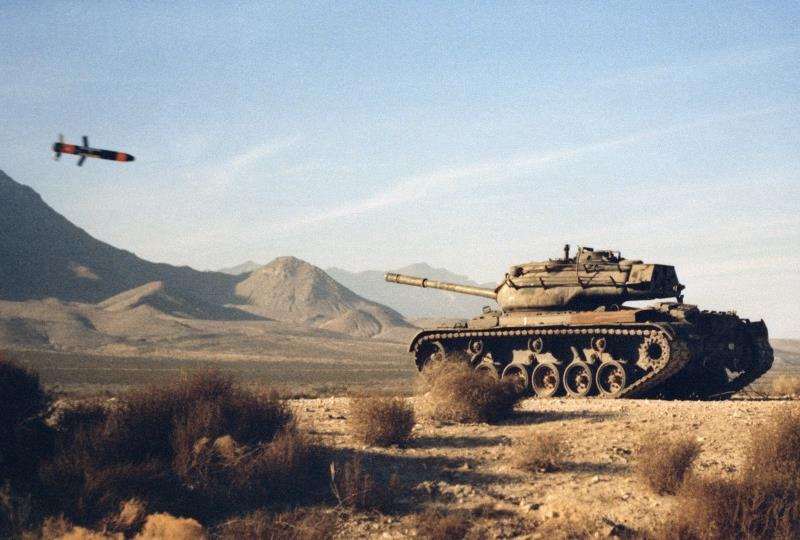
Copperhead was 1.37 meters (4 feet 6 inches) long, of course was 155 millimeters in diameter, and weighed 62.4 kilograms (137.5 pounds). Maximum range was 16 kilometers (10 miles). It was fired like a conventional artillery round, and required little special handling or training -- though there were switches on the munition to specify trajectory and laser designation options.
On firing, a thermal battery and a timer inside the Copperhead were activated, a gyro was spun up, tailfins popped open, and the SAL seeker began to scan. The seeker acquired laser reflections from a target as the munition falls toward the earth, and then fins popped open from the midbody to guide the Copperhead into its target, which was destroyed by the shell's hollow charge warhead. Work was performed on a Copperhead variant with a radar-homing seeker, but that version did not go into production. It is not clear if Copperhead was exported; it is out of production and appears to have been retired.
The US Army worked with Aerojet to develop a 155-millimeter round with "smart" submunitions under the designation of "M898 Sense And Destroy Armor (SADARM)". SADARM consisted of two submunitions in a 155-millimeter shell. As the shell descended into the target area after launch, it ejected the two submunitions, which each then releasing a ballute to stabilize itself, and finally released parachutes to slow its descent. Each submunition carried an infrared and a millimeter-wave sensor, and as the submunition descended it scanned the area below it for the signature of an armored vehicle. On targeting an armored vehicle, the submunition fired an explosively-formed projectile into the thin-skinned top of the vehicle. SADARM went into production in 1996. Over a hundred were expended during the US invasion of Iraq in 2003.
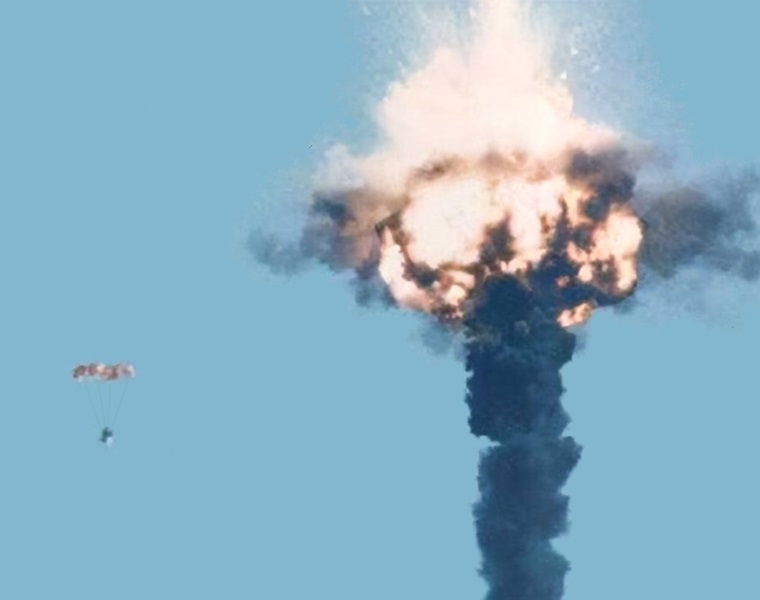
For whatever reasons, the US military gave up on SADARM, preferring to adopt the comparable "SMART-155" anti-armor projectile, made by Bofors of Sweden, a BAE Systems subsidiary. SADARM has vanished with barely a trace.
* From the 1990s, the US military's enthusiasm for GPS led to introduction of GPS-guided artillery shells. Raytheon developed the "Excalibur / M982" 155-millimeter munition for the US Army. Raytheon worked on the program with assistance from Bofors.
As introduced, Excalibur had pop-out tail and nose fins for guidance, and was designed with a 20-meter (66-foot) CEP. Excalibur had a secondary seeker mode to home in on GPS jammer transmissions, providing aggressive anti-jamming capability. Initial firing of an "all-up" round was in 2002, with the Army introducing the M982 into service in Iraq on a combat evaluation in 2006. The munition proved all that was expected of it, with a CEP of 4 meters (13 feet) 92% of the time. Raytheon introduced a new variant of the munition in 2013 that added a SAL seeker.
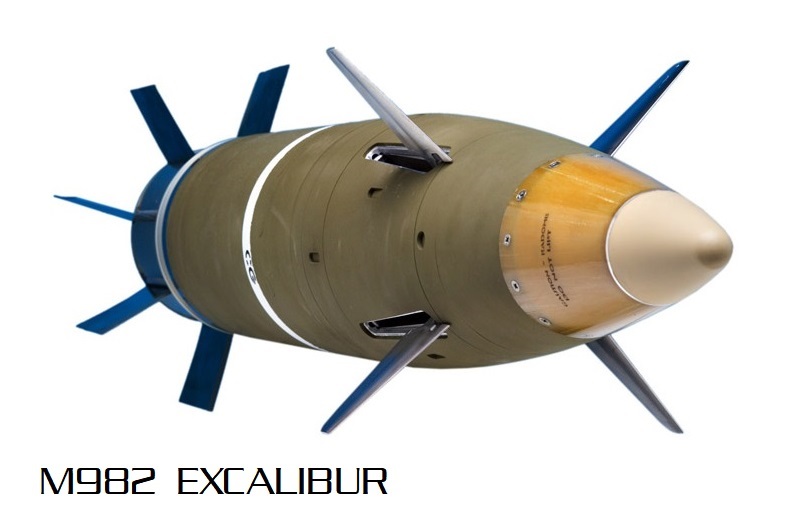
Excalibur has proven very popular, and has been adopted by Australia, Canada, India, Jordan, the Netherlands, Spain, and Sweden. It was supplied to Ukraine to fight the Russian invasion, by all appearances being used to devastating effect. The US Army has been working on a follow-on program to Excalibur the "Cannon-Delivered Area Effects Munition (C-DAEM)", to develop a smart anti-armor 155-millimeter round along the lines of SADARM / BONUS, and an improved anti-personnel round. Details are fuzzy for the time being.
The Army also worked with BAE Systems and Alliance Technical Systems (ATK) to develop the "Precision Guidance Kit (PGK)" to convert ordinary "dumb" shells into GPS-guided shells. The PGK was a "smart fuze" that could replace standard 105-millimeter and 155-millimeter shell fuzes, with the fuze mounting fins to provide guidance. Initial test firings were in 2008 and initial operational fielding of the "XM1156" was in 2013. PGK was defined as a "cheap and dirty" complement to the Excalibur, not a replacement for it. Apparently, it was also supplied to Ukraine.
There has been other -- so far, inconclusive -- work on guided artillery shells. The Pentagon is focused on a "Long Range Precision Fires (LRPF)" effort that is based on an array of munitions, smart artillery shells clearly being on the list, but nothing much has materialized to that end just yet.
The US Army has sponsored development by ATK of a smart round for the 120-millimeter mortar, with the designation "M395 Precision Guided Mortar Munition (PGMM)", in the form of a hollow-charge gliding munition with popout fins and GPS guidance. The PGMM saw operational use in Afghanistan from 2012, but that was the end of it. The US Marines worked with Raytheon to build a "Precision Extended Range Munition (PERM)" round for the 120-millimeter mortar, but that program faded out as well -- as did a Navy effort, the "Advanced Capability Extended Range Mortar (ACERM)", to develop a guided round for the 81-millimeter mortar. A smart mortar round may end up being introduced, but for the time being it looks like a dead end.
BACK_TO_TOP* There has been a push towards very small smart munitions. The US Army and Northrop Grumman developed a small smart submunition, the "Brilliant Anti-armor Munition (BAT)", which was a 20-kilogram (44-pound) weapon that looked like a cylinder about 1.5 meters (5 feet) long with a bulbous head when stored in its dispensing system. When released, the BAT popped out four wrap-around tailfins and four long, straight cruciform gliding wings around the midbody. The bulbous nose was fitted with an infrared sensor, and the wingtips were fitted with long leading-edge spikes fitted with acoustic sensors.
Once deployed, the BAT glided to a preprogrammed target location, with a cluster of BATs dispersing to ensure that they didn't attack the same targets, and used the acoustic sensors to identify the general location of a tank. Once a target was boxed by the acoustic sensors, the infrared sensor took over, directing the BAT to hit the target directly from the top, destroying it with a two-stage penetrating warhead. An Improved BAT (IBAT), with a combined millimeter-wave radar / infrared imager seeker, was also developed.
The plan was to deploy the BAT on the Block II version of the Army Tactical Missile System (ATACMS or "Attack 'Ems"), updated to carry a warload of 13 BATs. However, the Block II ATACMS was canceled in 2003, and BAT went into limbo. A smart weapon that could smash enemy armor concentrations was no longer a particularly relevant weapon for the "dirty little wars" the Army was suffering through by that time; it might have been a nice thing to have, but other weapons were needed at the time.
The irony was that a simplified BAT ended up being a useful weapon. It was straightforward to mate a SAL seeker to the BAT airframe, and in the spring of 2003, the Army performed a demonstration of a laser-guided BAT named "Viper Strike". The weapons were test-dropped from a US Army Hunter drone, scoring seven hits out of nine drops. The reach of the Viper Strike also enhanced its capability: it had a glide ratio of 10:1, meaning that it only fell one meter for every ten meters of horizontal flight, and so a drop from a mere kilometer of altitude gave the munition an attack "footprint" with a radius of up to ten kilometers.
The lightweight, accurate Viper Strike seemed like a good fit for drones, themselves well suited to dirty little wars, and quickly went into service as the "GBU-44/B", with the Hunter apparently the initial carriage platform. The munition was handled and carried in a bomblike canister with tailfins that ejected the Viper Strike after drop.
Viper Strike was intended for high-precision "top down" attacks on targets, particularly in urban or other built-up areas where collateral damage was a concern. Some Viper Strikes were modified from such stockpiles of BATs as were accumulated before that program went on hold, with these weapons retaining the wingtip probes for the BAT acoustic sensors, but the probes were deleted from new-build GBU-44/Bs.
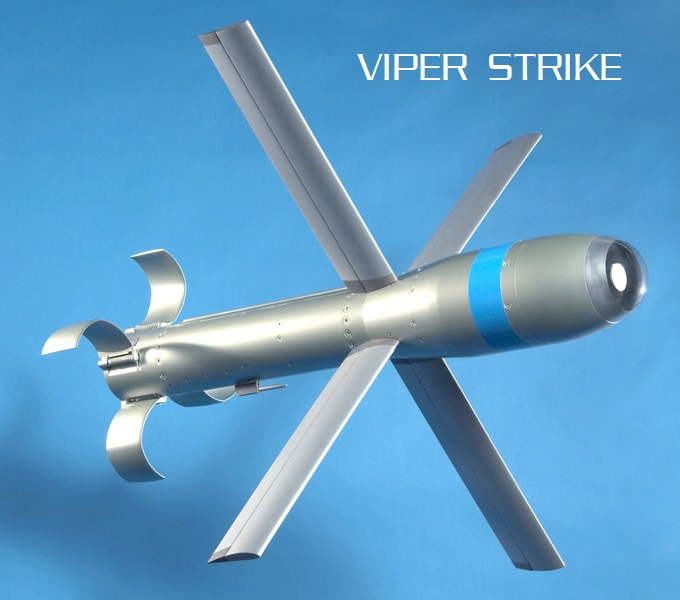
MBDA acquired the Viper Strike from Northrop Grumman in 2011. MBDA attempted to improve the weapon by adding GPS-INS midcourse guidance for guidance over longer range, and enhanced the software to make the munition more effective against moving targets. This version of the weapon was designated the "GBU-44/E Viper-E". It was then later updated to the "Viper-E II", with GPS-INS guidance only, and a datalink to permit midcourse updates for attacking mobile targets. There were mentions of other ideas for updates, such as a fragmentation belt for the shaped-charged warhead to add anti-personnel effects, and a mode to disable the warhead, turning the munition into a "smart rock" -- 20 kilograms moving at hundreds of kilometers an hour can make a strong but selective impression on an unarmored target.
The Viper Strike could be carried directly on a stores pylon, but it was also handled in and launched from a "Common Launch Tube (CLT)". CLTs could be loaded up for dispensing from the rear ramp of a C-130 using a 10-tube "Gunslinger" launcher, which precluded pressurization of the C-130's cargo bay; or a two-tube "Derringer door" launcher, with two such weapons dropped from chutes built into a crew door, permitting pressurization to be maintained.
The Viper Strike appears to be out of production, and it is unclear if it is still in service. In its heyday, there was considerable enthusiasm for small smart munitions, but since that time interest seems to have cooled:
* These small smart munitions have disappeared from public view. It is possible that some may be revived, but they suffered from several problems, one being that such munitions are not very hard to develop, and so there's a lot of foreign competition for the export market. In addition, the US military found APKWS so useful as to see no great need for another small smart munition. Most specifically, these small smart munitions were more or less designed with US SOCOM's needs in mind -- and SOCOM adopted another Raytheon small smart munition, the "AGM-176 Griffin".
The Griffin had a weight of 20 kilograms (44 pounds), including handling launch tube; a length of 1.1 meters (43 inches); and a 5.9-kilogram (13-pound) warhead. It featured a SAL seeker, but also had GPS-INS guidance; it had a programmable fuze, along with cruciform pop-out fins on the tail and midbody, and had a solid-fuel rocket motor.
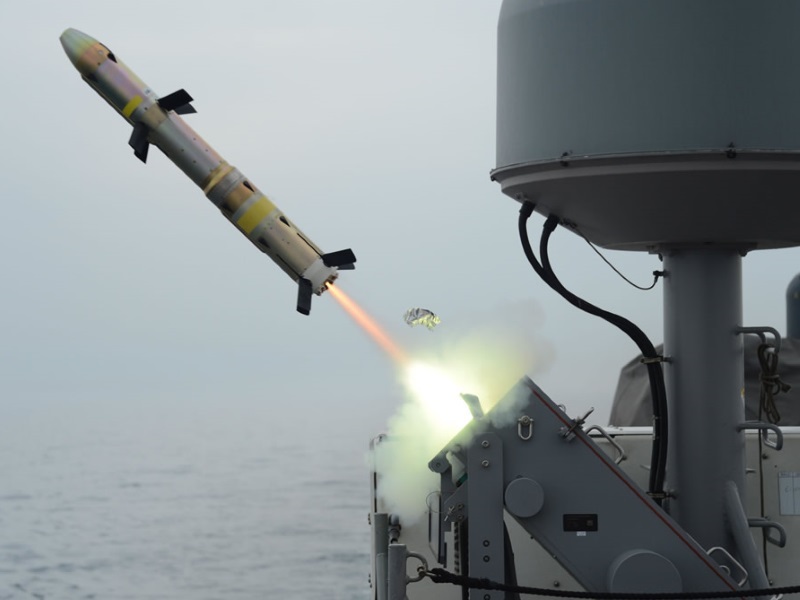
Two production versions of the Griffin were introduced, including the "Griffin A" and "Griffin Block II / B":
Production began in 2008, with several thousand produced to date. A "Block III" enhancement of the Griffin B was introduced that featured the ability to hit targets on the move; it also featured a new SAL seeker and a new combined-effects warhead. Raytheon has worked on a "Griffin C" with an imaging infrared seeker along with the SAL seeker and a datalink, as well as a "Griffin C-ER" with a larger rocket motor for much longer range, but there have been no buyers at last notice.
BACK_TO_TOP* This document started life in 1999 as what would become a comprehensive survey of global smart munitions. In 2014, I realized it had become very awkward and un-maintainable, and axed it. I have since been extracting and updating elements of it for more selective documents.
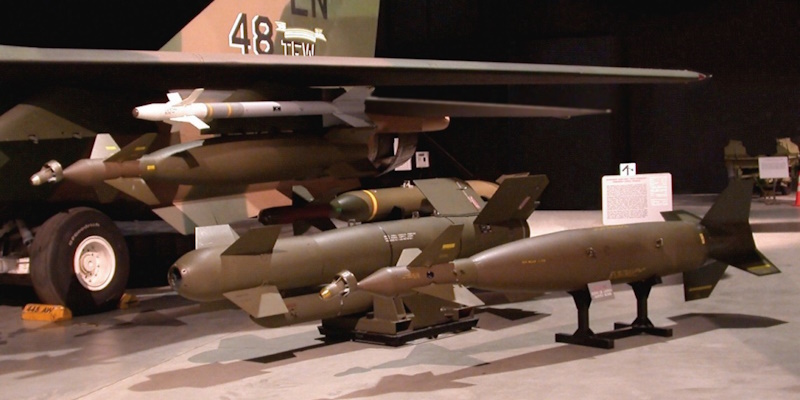
* Sources for this document included:
* Illustrations credits:
* Revision history:
v1.0.0 / 01 nov 16 / Glide bombs only, 2 chapters, title US SMART BOMBS. v1.1.0 / 01 oct 18 / Review, update, & polish. v2.0.0 / 01 jun 23 / Added missiles, 4 chapters, title US SMART MUNITIONS. v2.1.0 / 01 jul 23 / Reorganized. (+)BACK_TO_TOP
